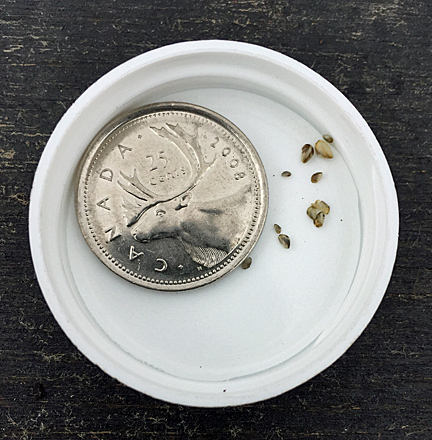Invasive Species
One of the biggest threats to our lakes is what is being brought into our province from afar. Invasive plants and animals threaten the health of lake ecosystems, often outcompeting native species.
The shells of invasive mussels covering a beach on Lake Winnipeg. Photo Credit: Tim Brunch
Invasive Animals
Photo Credit: Alberta Environment and Parks
Zebra and Quagga Mussels
Originally from Europe, these mollusks are believed to have hitched rides in the ballast tanks of ships and subsequently flushed into the St. Lawrence River. From there they invaded the Great Lakes and attached themselves to boats, trailers and equipment and were transported to lakes and streams all over the East. The invaders have since been transported to the American Southwest. The Alberta Government has a program in place to inspect all boats and trailers coming from outside the province in an effort to stop the mussels before they get into our water systems.
Once the mussels get into a lake they cause a lot of problems on boats, docks and other infrastructure.
Left: Mussels found on boat, showing size reference with a quarter (credit: AEP)
Right: Mussels on a piece of pipe left in an infected lake (credit: AEP)
A comparison between freshwater native and invasive mussels (photo credit: AEP)
Clean, Drain and Dry Your Boat
If you bring a boat, trailer and equipment into Alberta from another province or state, make sure to:
Clean
Clean and inspect watercraft, trailer and gear.
Remove all plants, animals and mud at the access area or dock.
At home, soak your gear in a two per cent bleach solution for one minute (20 millilitres of bleach per litre of water).
Rinse, scrub or pressure wash your boat away from storm drains, ditches or waterways.
Drain
On land before leaving the waterbody, drain all water from:
bait buckets
ballasts
bilges
coolers
internal compartments
livewells
transom motors
Never release live bait into a waterbody or transfer aquatic plants or animals from waterbody to another.
For paddle boats, drain by inverting or tilting the watercraft, opening compartments and removing seats if necessary.
Dry
Dry the watercraft and gear completely between trips and allow the wet areas of your boat to air dry.
Leave compartments open and sponge out standing water.
If you are using your boat in a number of different waterbodies, be sure to clean, drain and dry your boat and equipment after you leave each waterbody. This is especially important if you boat outside of the province.
To report zebra or quagga mussels, phone Alberta’s invasive species hotline:
1-855-336-BOAT (2628)
Invasive Plants
Quagga and zebra mussels are only the latest threat to Wabamun and other lakes in the province. Invasive aquatic and riparian plants have been here a while and are becoming quite a problem, supplanting native vegetation and threatening fish and wildlife habitat, such as the northern pike and western grebe. The WWMC has been holding workshops and supporting Alberta Environment in its efforts to eradicate the weeds and educate the public about the problem.
Purple Loosestrife used to be available at many garden centres but it quickly spread to our lakes and streams and is threatening fish and wildlife habitat by replacing native vegetation in Wabamun Lake.
So who are the big bad guys that threaten our lake?
Purple Loosestrife - a tall water loving plant with a spikes of reddish-purple flowers. Blooms throughout the growing season and one plant can produce over 1 million seeds. Can choke out wetlands and reed beds.
Flowering Rush — a cattail-like plant that produces a beautiful cluster of 20 to 40 pink through white flowers. It can quickly choke out water bodies affecting habitat for fish and wildlife not to mention making things difficult for boaters and swimmers.
Himalayan Balsam — often called "Poor Man's Orchid", this tall striking plant (up to 3 metres high) forms dense stands that shade out other native vegetation. Each plant can produce 700-800 seeds that are dispersed up to 5 metres from the parent plant.
Common Tansy — more of an upland plant, this aggressive plant spreads by seeds and roots. It is toxic to humans and animals if ingested, though it is generally disliked by cattle. It is another high seed producer.
Scentless Chamomile — typically grows in disturbed areas and is tolerant of flooding and drought. White flowers with yellow centres appear on the plant all season—with one plant producing up to 1 million seeds.
For more information on Invasive Weeds, please view the following documents:
Another good source of information is the Alberta Invasive Plant Council.






